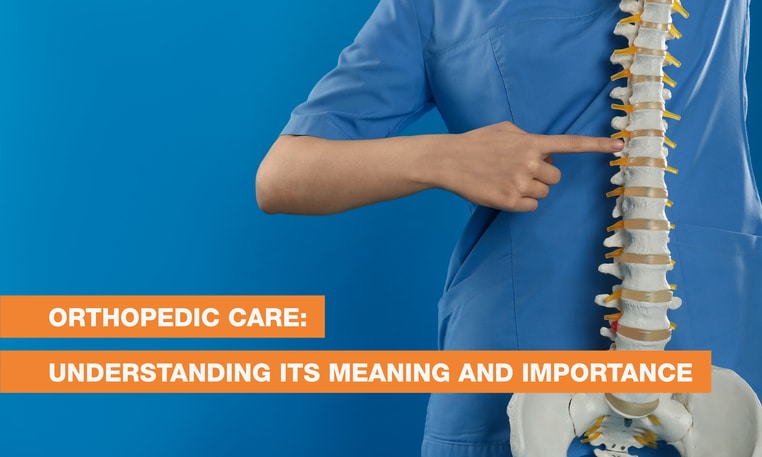Request Appointment
Enter your details and we will be in touch with you shortly;
Or call
8655885566
between 8 am and 8 pm.


One of the most important benefits of orthopedic care is that it helps increase the mobility and functioning of the musculoskeletal system. The musculoskeletal system is mainly responsible for moving, running, walking, and daily activities. Orthopedic care helps to restore and enhance the functioning of different components of the musculoskeletal system. You can regain your independence and health by taking other treatments for problems associated with the musculoskeletal system.
Reduces pain and discomfortOrthopedic problems can cause severe pain and discomfort. This makes a person inactive and reduces the quality of life. Orthopedic care can help in reducing pain and discomfort quickly. Your healthcare provider can suggest different pain-relieving therapies, medications, and exercises to relieve pain.
Reduces the risk of injuriesOrthopedic care can help reduce the risk of injuries. Regular exercise can improve the strength of your bones and muscles and reduce the risk of injuries. Holistic measures such as stretching exercises, maintaining an ideal body weight, and eating a healthy diet can also help prevent injuries. You can adopt preventive methods to improve the health of the musculoskeletal system and reduce the risk of injuries.
Improves quality of lifeOrthopedic care can help improve your quality of life to a great extent. Imagine how you will feel when you can move without pain and discomfort in your bones and muscles. You can go to your work and enjoy your hobbies involving physical exertion without pain. Orthopedic care not only helps to reduce pain but also improves the overall health of the musculoskeletal system.
Management of injuriesAccidents can occur without a warning. Accidents can cause severe injuries, and you may have to stay inactive for long. Orthopedic doctor meaning can help you recover from such injuries quickly by advising you on the best possible treatments. They can help manage pain by recommending physical therapies to restore mobility and functions quickly.
Management of chronic problemsSpinal Arthritis, lower back pain, gout, and tendonitis are chronic problems associated with the musculoskeletal system. Orthopedic care can help in managing chronic problems effectively. Who is orthopedic doctor? Orthopedic doctor is someone who can plan effective pain management strategies tailored to your needs. He/she can suggest medications along with physical therapy and rehabilitation techniques to recover fully and quickly. They can also suggest surgical intervention if required in a particular case.
Rehabilitation therapyRehabilitation therapy is an important part of orthopedic care. You may require physical rehabilitation after surgery. Your orthopedic doctor will make a suitable rehabilitation plan for your individual needs. Physical therapy and rehabilitation programs help increase the strength and mobility of the affected parts. Orthopedic care can help restore the functions of damaged muscles and tissues quickly by using proper physical therapy techniques.
Conclusion Musculoskeletal health is important for the functioning of the body. Orthopedic care is important in restoring and maintaining optimum health of the musculoskeletal system. Orthopedic doctors can help you lead an active life by using adequate and suitable treatment approaches for your needs. Orthopedic care is important as it not only helps to improve the health of the musculoskeletal system but also helps improve overall health. An orthopedic specialist can diagnose, treat, and advise suitable methods to restore the functions of your musculoskeletal system.Visit our nearest clinic for your first consultation
You must schedule an appointment with an orthopedic doctor if you have pain and stiffness in your muscles, joints, or bones, numbness or tingling in your fingers, or difficulty moving a particular part of your body.
An orthopedician or orthopedic doctor specializes in diagnosing and treating disorders of the musculoskeletal system. Common problems of the musculoskeletal system include tennis elbow, knee pain, shoulder pain, spinal arthritis, and osteoporosis.
Non-surgical healing therapies include a wide range of therapies such as physical therapy, injections, medicines, exercise programs, and orthotic devices. These therapies relieve pain, improve flexibility, strengthen muscles, and improve the overall health of the musculoskeletal system.
Simple exercises such as walking, cycling, running, and swimming can help enhance the strength of your musculoskeletal system. Regular exercise can help keep your musculoskeletal system healthy.